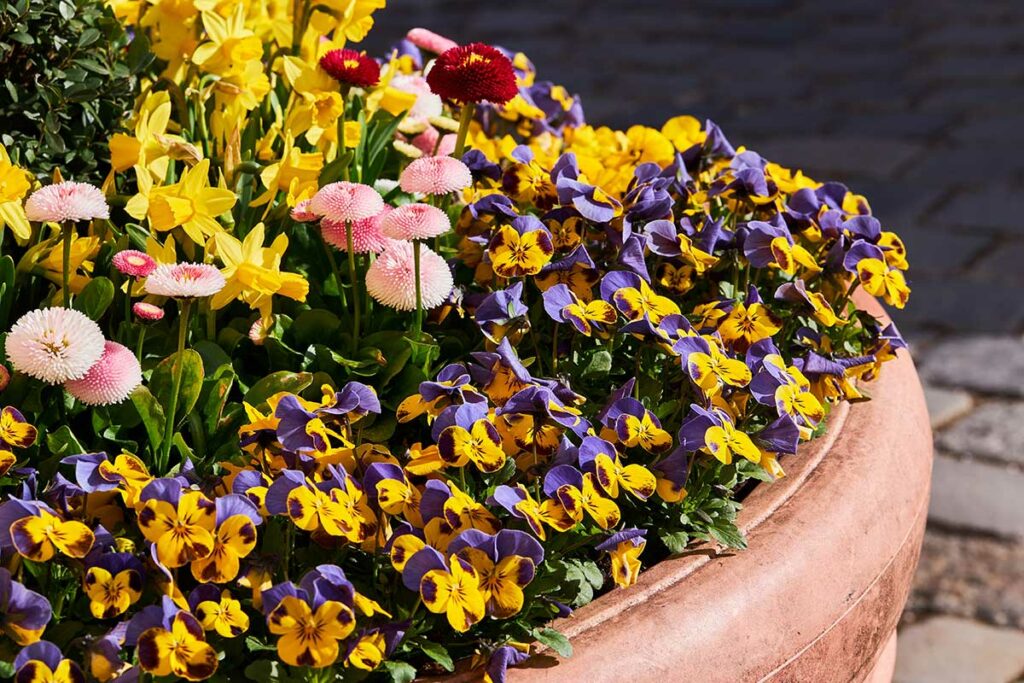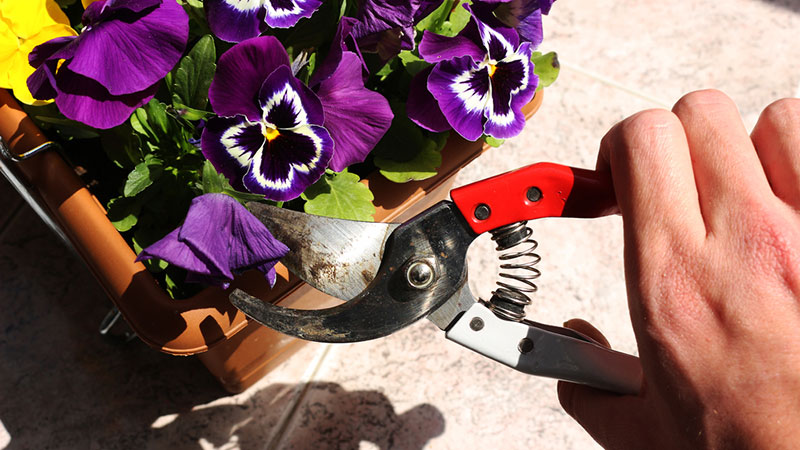
I always thought that pansies had petals that resembled a face. Each individual petal is designed in the shape of a heart, and the blooms come in a variety of colors that stand out in a garden. They can be found growing in hardiness zone seven and above, and caring for the plant is relatively straightforward.
Here are some tips to follow to help keep your pansies alive.
Light Requirements
The pansy is a plant that can grow in full to partial sun. The flowers will typically bloom for a longer period of time when they are not in the direct heat all day, so a bit of shade will be good for the plant, especially during the hottest part of the day. The eastern side of your home will be best because the plant can get morning sun and afternoon shade, which is how it prefers to grow.
Temperature Requirements
Even though this is a plant that does well with a lot of sunlight, it will not thrive in hot and humid temperatures. Ideally, the temperature should remain under 70 degrees Fahrenheit to keep the petals from wilting.
Soil and Fertilizer Requirements
Pansies can easily grow in any type of soil, but they prefer soil that is slightly acidic with a pH that is between 6.0 and 6.2. The soil also needs to be well-draining so that the roots don’t sit in water. Fertilizer is not required for pansies, but a monthly feeding during the growing season will help with its growth. Be careful not to give the plant too much fertilizer because it can make the stalks leggy. Nitrogen heavy fertilizer is a bad option because it will create more foliage and hinder the flowering process of the plant.
Water Requirements
Pansies do not need a lot of water to thrive. About an inch of water a week should suffice and give you a beautiful plant that lasts. The best time to water pansies is early in the morning before the sun hits the petals so that the soil can dry during the day.

Growing Pansies in Pots
Pansies can easily grow in pots, especially since this will allow you to control the amount of water that stays in the soil better than if it were planted in the ground. It also allows you to control the temperature a bit more, and even move it indoors when the sun gets too hot for the pansy to handle. If you can grow the pansy in indirect light, it will thrive. Ideally, try to use a pot that is about 12 inches in diameter or less so that the flower can be moved with ease.
Growing Pansies From a Seed
Growing a pansy from seed can be a challenging process, but it can be done. For the seeds to germinate, it needs an area that is dark and cool with a temperature of about 60 degrees Fahrenheit. The soil should be covered as well, but make sure that the soil under the plastic does not dry out because this will stunt the growth of the plant. When the plant begins to grow, the shoots will push through the plastic.
At this point, the plastic should be removed, and the plant should receive indirect sunlight and regular watering to continue to grow. This germination process will take about two weeks, but it could take much longer if the conditions are not right for growth.
For a list of different varieties of Pansies check out this guide here!
Pest and Diseases to Worry About
When it comes to pests, there are a few that will affect pansies. Some caterpillars will like to feed on the stems and the leaves of the plants. Aphids, spider mites, mealybugs, midges, and flea beetles are other pests that can be found on or near the plant.
Diseases that affect the pansy include powdery mildew, gray mold, rust, and root and stem rot. Leaf spots occur when the leaves are getting too much water on them with the sun shining. These are all diseases that are the result of the plant getting too much water, which can easily be rectified with a well-draining pot and soil. Also, make sure that you allow the soil to feel dry to the touch before watering the plant again to make sure that it’s not being overwatered.






